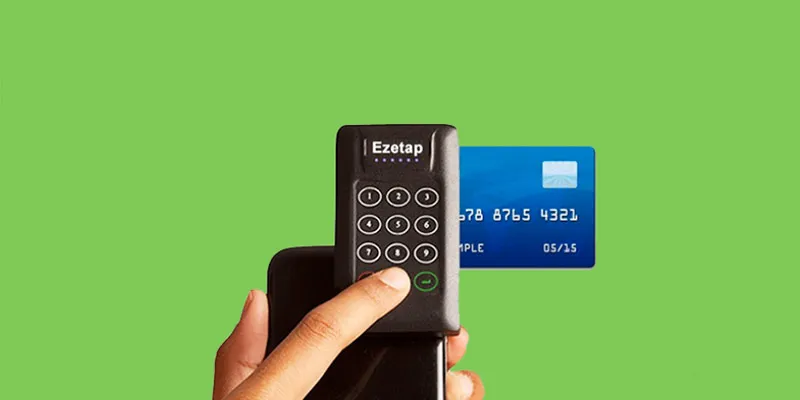WATCH: How the man who went from Byas to boss is driving digital payments startup Ezetap towards new geographies
Byas Nambisan took charge at digital payments startup Ezetap in 2018. In a video interview with YourStory, the CEO talks about transitioning from co-pilot to captain, growing exponentially after demonetisation, and the way ahead.

In late 2018, when Ezetap Co-founder Abhijit Bose – fondly referred to as Bobby in company circles – decided to leave the payments technology firm to take over as the head of Facebook-owned WhatsApp India, the news made headlines. Ezetap’s then Chief Financial Officer Byas Nambisan stepped in as interim Chief Executive to take over the reins during the post-Bobby period.
Nine months later, Byas Nambisan has comfortably settled into his role as the ‘boss man’. And the phrase ‘Byas man turns boss man’ has been steadily doing the rounds in Ezetap’s close circles.
Founded in 2011 by Abhijit Bose and Bhaktha Keshavachar, Ezetap is a full-stack payment acceptance company with a range of solutions including Point-of-Sale machines and smart charge slips.
When Byas visited the YourStory headquarters in Bengaluru, we couldn’t help but ask the story behind the name play. A visibly amused Nambisan responded, “I suspect that my marketing team may have had some influence.”
“We were doing an event within Ezetap, where we were giving each of our projects creative and fun names with a little story behind them,” he recalls. “These guys were thinking of something about me, and someone said, ‘Oh look, Byas has become the boss,’ and that’s where it all started,” he adds.
Watch the full interview of Ezetap CEO Byas Nambisan:
From co-pilot to captain
Byas, who’s passionate about his journey, recalls the transition period after then CEO and Co-founder Abhijit, aka Bobby, exited to join WhatsApp. “Part of this transition was simple,” he recalls. And part was a shift in gears.
Byas had worked with the team for more than four years since his appointment as chief financial officer at Ezetap in 2014, but the biggest change was transitioning from the seat of co-pilot to that of a captain.
“In my previous role, Bobby was captain and I was co-pilot. And the nice thing about being in a co-pilot’s role is sometimes you can say, ‘You know what Bobby, the ship is yours.’ I knew I could take a mental day off and go home and say, ‘It’s Bobby’s problem today’,” Byas recalls.
“Now that I am in the captain’s chair, it is always my problem. That was the biggest difference, honestly.”
That said, Byas has been among the key members of the top leadership team since the beginning, and considers no challenge as a drastic change. In fact, he calls it a process, an evolution that every company goes through.
“I think, the thing that both (Bobby) and I will be proud of is creating something that is bigger than us, that should be able to go on without us,” he says.
The demonetisation effect
Towards the end of 2016 end and the beginning of 2017, when demonetisation came into effect and the concept of a cashless society gradually took over, India’s fintech industry witnessed an exponential rise in activity.
Bengaluru-based Ezetap saw an almost 100 percent increase in transactions within the first three months of demonetisation as more and more people embraced digital transactions.
In India, the fintech industry has been constantly evolving. And in this ever-changing space, “where even the government is constantly innovating”, Byas says, “we have got to be out-thinking the government”.
Eyeing the international market
For Ezetap, which is a tech and solution-centric product, what has changed over the years is that our “product stack has become much more complete and much more polished”, Byas explains.
The smart payment solutions provider has expanded internationally, forayed firmly into the government space, and is also getting into modern retail.
“Our bread and butter (was that)… we started with ecommerce, mobile delivery, and now we have gone beyond that,” adds the CEO of the million-dollar company.
On the technological front, Nambisan feels that Ezetap has been taking certain digital assets, expanding, and playing it in areas where they haven’t pushed the frontier far enough.
“For instance, where can we use a Unified Payment Interface?” he asks. “Today, much of the deployment of UPI is in India, and we want to think about how we can deploy UPI outside of India,” he adds. The idea is to take an Indian payment instrument and “go international with it”.
As ambitious as these plans are, the Ezetap chief is aware of the fact that it will take time for these goals to materialise.
“Over the year, we will be looking at a growth of 70 to 100 percent, both in terms of business in India and internationally,” he says.
(Edited by Teja Lele Desai)


1562506112828.png?mode=crop&crop=faces&ar=2%3A1&format=auto&w=1920&q=75)







